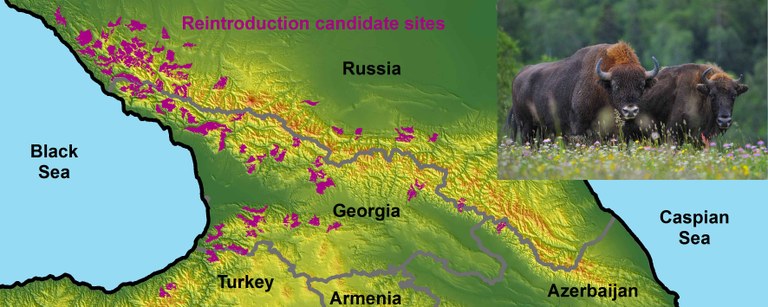Mapping European bison habitat in the Caucasus
Benjamin Bleyhl
In an increasingly human dominated world conservation management must find ways to integrate large mammals into the landscape. Often, conflicts with people and a lack of adequate winter sites are hindering factors leaving the remaining species mostly in small and fragmented populations. Broad-scale habitat suitability mapping can be an important tool to identify suitable space for species reintroductions. A good example of such a large mammal that is pushed back into only a fraction of its former range is the European bison. The goal of this study was to identify and assess potential habitat for European bison in the Caucasus ecoregion, which was mainly part of the species former range and has the potential to increase current populations. Specifically, I used seasonal presence data from four reintroduced populations and two sets of predictor variables to (i) map habitat suitability for summer and winter, (ii) derive a finer habitat characterization including management relevant categories expressing conflict potential to people, and (iii) identify potential habitat patches. Results suggest that most suitable habitat can be found in the mountains of the Greater Caucasus with substantial unoccupied areas in Russia and Georgia. However, areas of potential conflicts with people were widespread and often surrounded highly suitable areas. Importantly, I could identify 71 potential habitat patches (10,685 km²; 1.9% of the ecoregion) that entail suitable summer and winter habitat with low risk of human-wildlife conflict that could be a starting point for reintroduction assessments. Together, the results can be used to guide conservation efforts to establish a viable European bison metapopulation in the Caucasus ecoregion.

